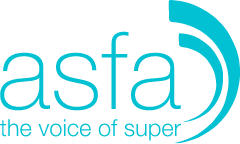At the 2019 ASFA Conference, PwC asked the audience whether they felt their organisations fully owned their culture. The majority said no.
That’s troubling for superannuation leaders because it suggests that many are missing opportunities right in front of them. By embracing their existing cultural situation, leaders can nurture behaviours that deliver better strategic, operational and member outcomes.
The Royal Commission focused most people’s attention on the damage that poor cultures can wreak upon organisations and their customers. While some superannuation leaders responded by treating culture solely as a risk to be managed and mitigated, no culture is exclusively bad. Rather, each culture has its owns strengths as well as weaknesses, and the positive potential shouldn’t be underestimated in the financial services industry.
This has come into sharper focus during the current COVID-19 pandemic, with many of the typical mechanisms by which people interact having been removed or disrupted. Superannuation workforces have been physically dispersed due to social distancing measures and organisations must now find innovative new ways to connect their workforces to give people a sense of shared purpose and togetherness.
Furthermore, the widespread uncertainty caused by COVID-19 offers an opportunity to set the right tone. Leaders and other organisational influencers must demonstrate clear, consistent and palpable behaviours to maintain a sense of confidence and assurance.
Culture can address superannuation challenges
By harnessing their inherent cultural situation, superannuation organisations—and in particular, their people—will be better equipped to tackle the multitude of challenges before them; including higher member expectations, industry complexity, increased regulatory scrutiny, competitive pressure, diminished public trust, and industry consolidation, to name just a few.
Culture is what drives behaviour within an organisation. The way people behave will directly affect a super fund’s ability to deliver a reliable service that builds trust with its members. Behaviours can also make or break any attempts to become more agile, innovative, productive or member-centric. And where outsourced models exist, the way partners behave will dictate how consistent the member experience can be.
During the Royal Commission, Kenneth Hayne AC QC pointed out that every organisation has its own unique culture. Extrapolating on that, it can be helpful to think of culture as being a lot like a personality. We all have personality traits that define us. The question is, how can we own those traits to achieve positive outcomes?
For example, a retail super fund might seek to redirect its drive for profit towards an inherent focus on members. Or a fund that already has an existing passion to serve members might apply those interpersonal strengths to build more effective and productive internal working relationships.
Start with insights
To channel the innate strengths within an organisation, the first place to start is with deep insights about the current cultural situation. This involves more than a routine staff survey.
A comprehensive approach is required to gather a variety of data, real stories and root causes about how and why work is done in the organisation. This will provide leaders with cultural insights that are actionable.
Data visualisation techniques can help in this process. Mapping an organisation’s unique cultural thumbprint visually can shed light on where leaders are likely to face resistance and —importantly—where they might find a glide path to support strategy execution, operating model intent and transformation.
Focus on the critical few behaviours
In any superannuation organisation, there will always be a very long list of behaviours that leaders want to adapt or alter. But such changes take time, money and perseverance. Rather than trying to change everything on the list, it is more realistic, efficient and effective to prioritise the critical few behaviours that will most impact leaders’ desired outcomes.
Leaders should identify three or four behaviours that directly drive the organisation towards the intended strategic results. A handy way to identify those is to look for behaviours that are signalling, multiplying and performance driving. That is: they must signal that something new or fresh is occurring; they must be able to be spread and grow organically through the organisation; and they must directly drive outcomes.
The critical few behaviours will spread more easily through the organisation when they are aligned to inherent cultural traits that have already been identified. Crucially, teams and colleagues should be encouraged to localise and tailor the critical few behaviours to their working circumstances.
Pulling the right cultural levers
Leaders can enforce rational compliance among their people through traditional levers such as remuneration, governance, accountability maps and the upcoming Financial Accountability Regime (an extension of the Banking Executive Accountability Regime). Other such levers include organisational structure, team/personal key performance indicators (KPIs), and training. Collectively, we call these ‘formal’ levers.
Formal levers should be activated for any organisational change, behavioural or otherwise. However, even with those in place, people won’t necessarily commit emotionally, and they may not voluntarily demonstrate the critical few behaviours that leaders seek.
To secure that deeper, more sustainable commitment, leaders must take a less orthodox approach to tap into what informally influences people.
A big step towards that is to identify the authentically influential leaders within the organisation. This means finding out who is talking to who, who trusts who, and who people seek advice from. A systematic approach is required for this because these informal leaders may not, in fact, be the obvious high-performing all-stars one might expect. In the hands of these informal leaders, the critical behaviours can spread organically through an organisation.
Tracking progress is essential
Too often, organisations start with the best intentions to ground culture in strategic outcomes but then become distracted by competing everyday initiatives. In doing so, they defeat their own attempts to proactively manage and harness culture. Therefore, it’s vital to monitor tactical cultural progress, adoption of the critical few behaviours, and the business outcomes an organisation wants to achieve.
Tactical progress measures track the level of participation in cultural interventions, behaviour change and capability uplift. As we have explored, every organisation’s cultural situation is unique, so progress measures should be tailored to individual circumstances. Metrics might include (among others) the number of leaders who have established capability programs, the number of authentic informal leaders mobilised, or checking off culture initiatives on the roadmap.
Behaviour KPIs track how the critical few behaviours are being adopted and demonstrated within an organisation. These are tactical lead measures that allow leaders to ‘course correct’ along the way. Possible metrics are many and varied, including (but not limited to) pulse surveys, critical few anecdotes, or pilot test results and measures in performance management systems. Establishing a central dashboard for these measures allows everyone to track progress, access feedback and recalibrate their efforts accordingly.
Return on investment
Ultimately, superannuation organisations invest in culture to help deliver business and member outcomes. Therefore, it’s vital to measure the actual impact of behavioural change in the organisation. At the outset, leaders must be clear and realistic about what outcomes their critical few behaviours can achieve.
Leaders should think about what impacts they expect to
see within business units and on the front line of the organisation – then identify suitable metrics to measure this. These might include improved member net promoter score, effort score, acquisitions or reduction in member complaints. They might also include indicators of employee engagement/attrition, productivity uplift, economies of scale achieved and, of course, better outcomes for members.
Achieving targets in these areas can dramatically boost the performance of super funds which is why every organisations should seize the chance to own their culture. To learn more, view PwC’s Superannuation Matters report.






